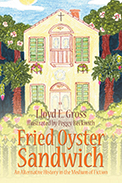
 |
Eric Kaufmann, the only child of German and Irish immigrants, is young and in love as he and Stephanie Weaver stroll through Audubon Park in 1909 New Orleans, Louisiana. It’s been fourteen years since the last four states of the Confederate States of America (CSA) have abolished slavery. Their many walks in the park are filled with conversations encompassing politics, women’s rights, religion, and Stephanie’s Native American heritage. Their marriage will ensure the survival of Eric’s family name and begin the story of four generations of Kaufmann’s, as they live through the most tumultuous years of the 20th century. Through the Kaufmann family’s professional endeavors and political interests, Gross explores the relationship between the CSA and the USA. Throughout the story of Kaufmann births and deaths is one constant—the unanswered question that hangs like Spanish Moss from the Live Oaks: Will we ever be one country again?
Written as an Alternative History, this story, with its premise of a Southern victory in the Civil War includes an interesting narrative concerning the South’s favorable foreign relations. There are moments of historical interest as pertains to New Orleans, the Mexican Hapsburgs, and the development of the Catholic and Lutheran churches in New Orleans. However, the rise of a political New Orleans family from 1909 to 1977 plus the inclusion of the Mexican Hapsburgs in less than 200 pages leaves little time for depth. Nevertheless, the story is enjoyable. The book is rife with descriptions of New Orleans and, as the title implies, the foods that have brought the city fame. Appendices are included for history buffs to further explain how independence was won and define the role of the CSA in the Mexican War. And for fun, there’s a list of CSA presidents.